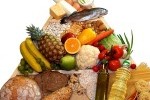Forum Replies Created
-
AuthorPosts
-
April 25, 2014 at 7:00 pm #2522
Thank you for your response! I like how you mentioned GF foods are often way more expensive then non-GF foods. I found a study that states the GF market is projected to reach a value of $6,206.2 million while growing at a compound interest rate of 10.2% by 2018 (1). This can mean that the GF market will be one of the most prosperous food and beverages markets in the future. So for someone who hasn’t been diagnosed with Celiac disease or gluten intolerance should really think hard about how much money they want to spend, especially if some of the essential nutrients will be missing. This study also states that a population-based screening only showed children with Celiac disease to be in the range of 0.3 to 3%. (1) So it seems to be more rare than I thought!
1. Miranda J, Lasa A, Bustamante A, Churruca I, Simon E. Nutritional Differences Between a Gluten-free Diet and a Diet Containing Equivalent Products with Gluten. Plant Foods Hum Nutr. 2014:DOI 10.1007/s11130-014-0410-4.
March 27, 2014 at 7:39 pm #2478The mentality behind the Paleo diet is, “If our hunter-gatherer ancestors didn’t eat it, we don’t need to.” Hunter-gatherers didn’t have access to refined grains, processed foods, dairy, potatoes, salt, and refined vegetable oils (1). Say good bye to wheat, and legumes as well. If you go Paleo, you’ll eat a lot of fruits and vegetables, lean meats, and you can eat eggs, nuts and oils such as olive and coconut oil. Meat provided a large fraction of the day’s food for our ancestors, they consumed high levels of cholesterol. However, they ate less fat but consumed more essential fatty acids and a higher ratio of polyunsaturated to saturated fats than today’s current U.S. diet (1). Studies have shown that the Paleo diet can improve blood pressure, increase insulin sensitivity, and improve lipid profiles. Another study showed that the Paleo diet reduced the glucose levels of the participants by 36% (2). The Paleo diet can be more costly since the meat and produce are the more expensive foods to buy (2).
References
1. Eaton BS, Konner M. Paleolithic Nutrition: A consideration of Its Nature. The New England Journal of Medicine. 1985; 312(5): 283-289.
2. Frassetto LA, Schloetter M, Mietus-Synder M, Morris RC Jr, and Sebastian A. Metabolic and Physiologic Improvements From Consuming a Paleolithic, Hunter-Gatherer Type Diet. European Journal of Clinical Nutrition. 2009; 63: 947-955. -
AuthorPosts






